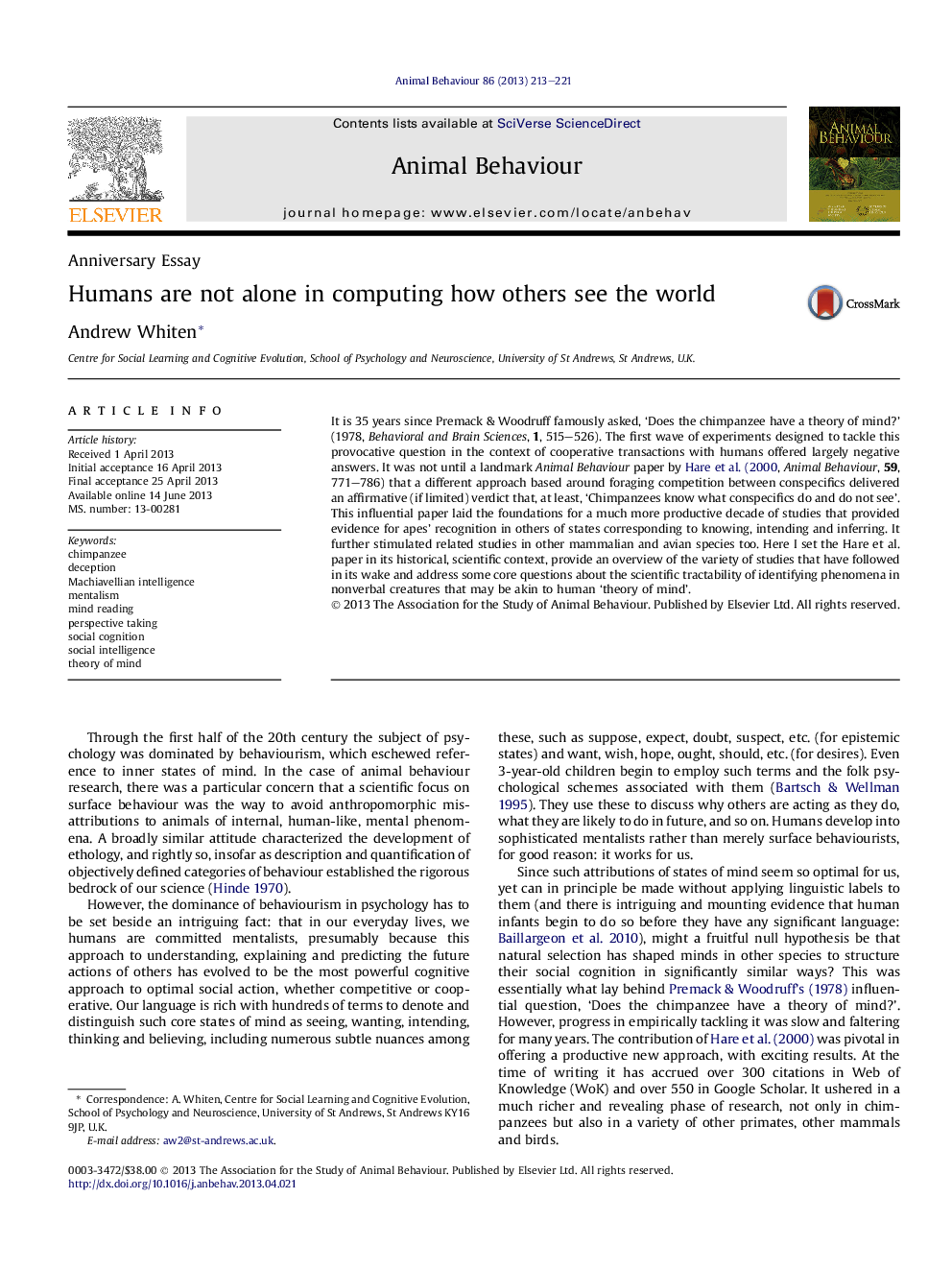| کد مقاله | کد نشریه | سال انتشار | مقاله انگلیسی | نسخه تمام متن |
|---|---|---|---|---|
| 2416586 | 1104282 | 2013 | 9 صفحه PDF | دانلود رایگان |

• Hare et al. (2000) was pivotal in the 35-year history of animal ‘mind-reading’ studies.
• The field has blossomed since, and extended from chimpanzees to other primates and birds.
• Some primate and avian species have been shown to take account of what others see.
• Discriminating in what sense animals are really ‘psychologists’ remains challenging.
It is 35 years since Premack & Woodruff famously asked, ‘Does the chimpanzee have a theory of mind?’ (1978, Behavioral and Brain Sciences, 1, 515–526). The first wave of experiments designed to tackle this provocative question in the context of cooperative transactions with humans offered largely negative answers. It was not until a landmark Animal Behaviour paper by Hare et al. (2000, Animal Behaviour, 59, 771–786) that a different approach based around foraging competition between conspecifics delivered an affirmative (if limited) verdict that, at least, ‘Chimpanzees know what conspecifics do and do not see’. This influential paper laid the foundations for a much more productive decade of studies that provided evidence for apes' recognition in others of states corresponding to knowing, intending and inferring. It further stimulated related studies in other mammalian and avian species too. Here I set the Hare et al. paper in its historical, scientific context, provide an overview of the variety of studies that have followed in its wake and address some core questions about the scientific tractability of identifying phenomena in nonverbal creatures that may be akin to human ‘theory of mind’.
Journal: Animal Behaviour - Volume 86, Issue 2, August 2013, Pages 213–221